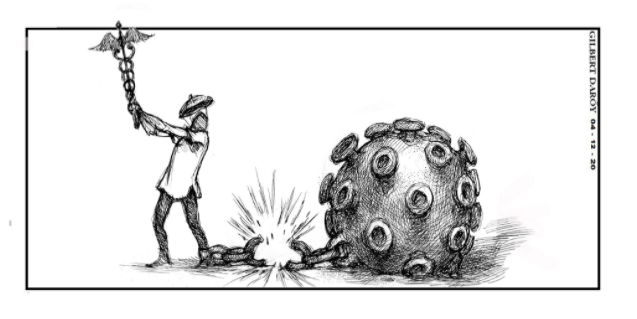
Much of the coverage on the COVID-19 pandemic has focused on the number of infected cases and fatalities every day. But, though smaller in number, the stories of recovery by patients are providing an encouraging counterpoint to the grim statistics—especially in the Philippines where hospitals and frontline medical personnel otherwise rendered near-breaking point by the health crisis find renewed vigor to soldier on when a patient, thanks in large part to their expert ministrations, overcomes the illness and becomes well enough to be sent home.
In a Facebook post, COVID-19 patient Julian Thomas Alcasid Sese recalled the lowest point in his hospital stay while battling the virus.
Short of breath, feverish and in pain, he had been waiting in isolation at the emergency room for 17 hours, following up his request for a room every so often. Finally, an ER doctor told him that there was one, but it was being disinfected because the last patient had expired.
“Hearing this broke me and sent me into tears while curling up into a ball in the ER,” he said; death now seemed a real possibility some two weeks after he developed the first symptoms of the coronavirus disease.
Testing positive for COVID-19 had always seemed like a death sentence. The pandemic has racked up over 1.7 million cases and harvested 102,774 lives in the last four months since it emerged in Hubei province in China.
In the Philippines, as of Saturday, there were 4,195 cases, 221 deaths, and 140 recoveries.
But despite the odds, Sese recovered. Eleven days later, his fifth COVID test finally came out negative and he could now go home, though he must still undergo a 14-day self-isolation while waiting for the results of his other tests to be negative.
Sese’s story is just one of the many cases of recovery—usually unheralded—that have provided slivers of hope amid the often grave discussions about the disease. As journalist Howie Severino, himself a recovering COVID patient, put it in a moving account of his nine-day ordeal: “The reality is, many of the recoveries don’t get counted, while the deaths often make the news, adding to the overwhelming sense of dread. The odds of survival are pretty good… I am living proof.”
Last Monday, the Makati Medical Center (MMC) reported 29 recoveries from COVID-19, while the Asian Hospital and Medical Center in Muntinlupa City announced that five of its patients have recovered as of March 27. At the Marikina Valley Medical Center, six COVID-19 patients have been discharged after testing negative for the dreaded disease.
As of Saturday, April 11, at least 376,000 people worldwide have beaten back the disease, according to the Johns Hopkins University dashboard, which has been tracking recovered cases. The actual figure is likely to be higher since the data only cover confirmed cases, while mild cases usually manage to recover at home without medical care in hospitals, said the US Centers for Disease Control and Prevention.
Even more encouraging is that, contrary to previous medical reports that considered senior citizens and those with preexisting medical conditions as the most vulnerable sectors, survivor cases show that they actually have a fighting chance at recovery.
According to an ABS-CBN Investigative and Research Group analysis of Department of Health (DOH) data, Patient (PH) 143, a 73-year-old male, was discharged eight days after he first experienced symptoms, the shortest time of recovery among the 26 recovery cases analyzed from 636 confirmed cases as of March 25.
Of this number, 42 percent have existing medical conditions: hypertension, asthma, diabetes or a combination of these.
More than a third, or 35 percent of survivors, meanwhile, are senior citizens, the ABS-CBN research indicated.
The case of the 83-year-old woman from Sta. Rosa, Laguna, who became the oldest person so far to recover from COVID-19 in the Philippines, seems to support that analysis. So do the cases of recovery of four other Filipino senior citizens: a couple, 70 and 69 years old, respectively, from San Juan City; a 75-year-old woman from Makati City; a 72-year-old man from Batangas, and a 70-year-old man from Central Visayas.
Confirmed the World Health Organization: COVID-19 may be fatal for the elderly as well as those with compromised immune systems and underlying medical conditions, but 80 percent of cases globally showed a high chance of recovery “without needing special treatment.”
The number of survivors is “worthy of quiet applause to motivate our workforce,” said MMC medical director Saturnino Javier in a statement. No, not just quiet applause but lusty cheers—first for the medical workers whose tenacious care should rightly be credited for such crucial turnarounds, and for the patients themselves, for the inspiration and example of their valiant fight to show that, against this much-feared contagion, one can prevail. To life!